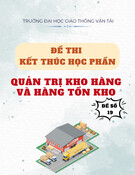
* Corresponding author Tel.: 7(499)248-01-81
E-mail address: litvinova_t.m@mail.ru (T.M. Litvinova)
© 2020 by the authors; licensee Growing Science.
doi: 10.5267/j.uscm.2019.7.002
Uncertain Supply Chain Management 8 (2020) 225–230
Contents lists available at GrowingScience
Uncertain Supply Chain Management
homepage:
www.GrowingScience.com/uscm
Supply chain of the imported ginseng medicinal plant materials for the pharmaceutical industry
of the Russian federation
T.M. Litvinovaa*, I.U. Glazkovaa, S.А. Levaginaa, E.N. Shalyapinаa and A.G. Sheinaa
aSechenov First Moscow State Medical University, 8 Trubetskaya St., bldg. 2, Moscow, 119991, Russian Federation
C H R O N I C L E A B S T R A C T
Article history:
Received June 5, 2019
Received in revised format June
25, 2019
Accepted July 2 2019
Available online
Ju
ly
2
201
9
The article reviews methods of transportation for various types of imported medicinal plant
materials of ginseng roots from China to the Russian Federation, with due consideration for
risks. Logistic supply chains for ginseng roots have been developed and proposed based on the
systemic method of research and the information analytical method. The optimal method for
transportation of pharmaceutical substances of plant origin is chosen on the basis of the priority
criteria for the cargo owner, as well as with due consideration for the peculiarities of the type
of medicinal plant materials of ginseng roots.
., CanadaGrowing Scienceby the authors; licensee 2020©
Keywords:
Supply chain of medicinal plant
material
Ginseng roots
Supply chain risks
Herbal drugs
Pharmaceutical substances of
plant origin
1. Introduction
An important criterion for the successful sale of a medication and pharmacy assortment is to find the
optimal way from the manufacturer to the consumer. Supply should be as gentle and thoughtful as
possible in order to avoid transportation costs and losses. Supply of goods to the pharmacy organization
assumes that each batch of medications has passed a quality check and was subjected to temporary
storage in warehouses. Besides, it is possible that the medications were delivered from other countries
or regions, which involved preparation of a significant amount of documentation. Logistic supply
chains represent detailed descriptions of all goods transportation, taking into account the occurrence of
risks and the search for optimal delivery from the source to destination. At first glance, building such
chains may seem a relatively simple task: it is only necessary to decide where from, where to and how
to transport the cargo. But there are new options with each stage of the logistic analysis that need to be
considered for the successful implementation of the goal in reality (Bogoyavlensky, 2014). Statistics
for the past five years indicate that 98% of the volume of dried ginseng roots in USD are supplied from
China. The remaining parts are imported from Canada (0.9%), South Korea (0.7%), and Germany
(0.4%), but mainly in the form of finished dosage forms and combined medications. According to the
ru-stat data, 5.45 tons were imported in the Russian Federation in 2017, of which China accounts for

226
97.8% (Export sand imports of Russia, 2019). As such, China is the leader in the supply of dried ginseng
roots to the Russian Federation.
Ginseng roots were included in the USSR State Pharmacopoeia into 1968, and later into the Russian
State Pharmacopoeia as well. They are currently included in the State Register of Medicinal Products
(State register of medicines, 2019) and the State Pharmacopoeia of the Russian Federation XIV edition
(the State Pharmacopoeia of the Russian Federation XIV edition (SPRF XIV ed.) Pharmacopoeial
Monograph 2.5.0013.15 “Panacis ginseng radices”. Wild ginseng is listed in the Red Book of the
Russian Federation and protected by the Convention on International Trade in Species of Wild Fauna
and Flora (2015).
Ginseng roots are valuable medicinal plant materials, which are in demand by many pharmaceutical
companies for their processing into finished dosage forms (Hu, 1976; Harkey et al., 2001). Such
industrial factories include Parapharm LLC (Moscow), Vifitekh (Moscow Region), Ivanovo Farm.
Factory OJSC (Ivanovo), Kamelia (Moscow region), Genel Trade LLC (Kaluga region), Vis LLC
(Moscow), and other enterprises engaged in the production of biologically active food additives and
cosmetics. As such, there is a concentration of production mainly in the central region of the Russian
Federation, and a challenge of transporting medications from China to Moscow for further distribution
to manufacturing plants emerges.
A risk in the logistic system is an unfavorable event that can lead to deviation of the actual parameters
of the logistic flows from the target output. The main risk during the transportation of ginseng roots is
its improper storage during transportation. This necessitates control over the actions of transport
companies at each stage of delivery (Brodetsky et al., 2010).
According to SPRF XIV ed., packaging must ensure protection of medication during its storage and
transportation from damage, losses, and negative effects of environmental factors (temperature,
humidity, light). Packaging must be uniform in type for each batch of raw materials; clean, dry, with
no odor. The materials from which the packaging is made must be durable, light, chemically and
physically indifferent when in contact with medication (Panacis ginseng radices, n.d.). The following
types of packaging are used for the dried medication Panacis ginseng radices: woven bags (raw material
weight no more than 50 kg), paper laminated bags (raw material weight no more than 15 kg), plastic
bags (raw material weight no more than 15 kg), oblong bales made from fabrics (raw materials weight
not more than 50 kg), plywood boxes (raw material weight no more than 30 kg), etc. Panacis ginseng
radices medication should be transported in dry, clean, with no odor, covered vehicles, or in containers
(GOST 6077-80, 1980).
It must be noted that packaging, transportation, and storage of fresh ginseng roots have their
peculiarities. According to the regulatory documentation, fresh medication Fresh cultivated ginseng
root is packed in wooden boxes with holes in the end and side walls. The weight of roots in one box
should not be more than five kilograms. The box is lined with a cloth inside when used for ginseng
roots packing. A layer of moistened sawdust is made at the bottom of the box, then the first layer of
roots goes, which is also filled with sawdust, and so on. The box should be edged with steel packing
tape 0.7 mm thick and 20 mm wide, sheathed with packing tissue, and sealed. Ginseng roots are stored
in a dry closed area at a temperature of 3 – 8 °C for not more than five days (GOST 23938-79, 1980).
These peculiarities must be taken into consideration when choosing a mode of transport.
2. Methods
Logistic supply chains for ginseng roots have been developed and proposed for the pharmaceutical
industry of the Russian Federation based on the systemic method of research and the information
analytical method.

T.M. Litvinova et al. /Uncertain Supply Chain Management 8 (2020)
227
3. Results and discussion
It is known that the first stage of importing the medication involves planning of the procurement volume
and preparation of the necessary documents. It is followed by a challenge of the medication
transportation from China to the Russian Federation. Let us compare the possible ways of delivery:
1) Container shipping by sea. Delivery times depend on the port of destination. For example, it will
take a cargo from Shanghai less than a week to reach Vladivostok or 20 – 25 days to the Black Sea
ports via the southern sea route, and 40 – 45 days to St. Petersburg via the northern sea route. Add the
time for customs clearance in the northern capital (2 days) and that for delivery to Moscow (2 days),
and get about 50 days as a result. This is how long the cargo will be in transit, including the customs
and transport procedures. However, this way is not always available due to climatic conditions.
2) Truck haulage. This method of delivering cargo from China is especially popular in the Russian
regions bordering the People’s Republic of China, and transportation does not take long.
3) Air transportation is the fastest, most reliable and safest, most mobile, but also the most expensive
type of delivery. Even taking customs clearance and delivery of goods from the terminal to the
recipient's warehouse in Moscow into account, the delivery will take only 3 days on average (5 days
from Guangzhou to Domodedovo).
4) Rail transportation. A stable and consistent delivery method that does not require unnecessary cargo
transportation, since there is a single connecting railway network between major cities of the Russian
Federation. Difficulties can arise only in the event of adverse weather conditions, but they actually must
be taken into account in any mode of transportation.
According to the statistics of the freight forwarding companies in the Russian Federation for November
2018, the average transportation cost for ginseng medication with a weight of 5.45 tons amounted to at
least $1,200 by truck haulage, about $1,850 by rail, and at least $6,860 by air.
The optimal variant of the logistic supply chain of ginseng roots medication from a Chinese
manufacturer to the warehouse of a Russian medication manufacturer is presented in Fig. 1.
It follows from the supply chain that several options are available for delivering finished dosage forms
to Central Russia: it can be accomplished either without transshipment or with unloading and changing
transport in such hubs as Yekaterinburg, Irkutsk, Krasnoyarsk, etc. The route will depend on
transportation financing, human factor, time interval, and weather conditions. Vladivostok is the best
city to accept the imported finished dosage forms, since it has the necessary infrastructure for further
transportation (warehouses, airport, railway station, and seaport). There is another option for delivering
the imported finished dosage forms, which is delivering cargo by rail to Heihe (China) and crossing the
border by the Zeya River. In this case, additional financial costs emerge for loading and unloading the
finished dosage forms from railway to trucks, then to the sea transport, and then back to trucks (Fig. 2).

228
Fig. 1. Logistic supply chain for the finished dosage forms of ginseng roots from China to the
warehouse of the medicine manufacturer in the Russian Federation
railway
air
truck
air
air
air
railway
truck
railway
truck
railway
truck
air
China
Vladivostok
Irkutsk Yekaterinburg
St.
Petersburg
Moscow
ShCT
St.
Petersburg
Krasnoyarsk
Kazan
Nizhny
Novgorod
Moscow
CW
Novosibirsk
Arkhangelsk
sea
Northern
Seas
Yekaterinburg
air
railway
truck
air
railway
truck
air
railway
truck
air
railway
truck
railway
truck
railway
truck
railway
truck
railway
truck
air
railway
truck
air
railway
air
railway
truck
railway
truck
railway – railway transport
air – air transport
CW
–
central
warehouse
truck – truck haulage
sea – sea transport
ShCT
–
Sheremetyevo
Cargo
terminal

T.M. Litvinova et al. /Uncertain Supply Chain Management 8 (2020)
229
Fig. 2. Logistic supply chain for the finished dosage forms of ginseng roots from China through
Blagoveshchensk, Russia
Intermodal transportation combining air transport mode and trucking haulage is the fastest way to
deliver finished dosage forms of ginseng roots from China to the central part of the Russian Federation.
However, a significant disadvantage of this transportation option is its high cost, since air transportation
implies additional fuel surcharges and the airport warehouse costs. This type of transportation suits best
for the delivery of fresh ginseng roots that are good for no more than five days. Such an expensive type
of transportation can be paid back only when purchasing a large volume of imported raw materials with
a significant discount. The cheapest way to deliver the finished dosage forms of ginseng roots is by sea.
This is the best way when there are no time constraints on storing and transporting the finished dosage
forms, and the company has a large turnover and limited budget. This transportation mode can be used
to deliver the finished dosage forms of dried ginseng roots. In this case, cargo can be delivered directly
from the Chinese sea port to Arkhangelsk by northern seas, which are also free from piracy.
railway, truck railway, truck
railway, truck
air
railway
truck
railway, truck
а
ir
,
railway
,
truck
а
ir
а
ir
а
ir
Novosibirsk Irkutsk
Blagoveshchensk,
Russia
Perm
St.
Petersburg
Moscow
China
warehouse
Heihe, China
railway
Yekaterinburg
railway, truck
railway, truck
railway – railway transport
air – air transport
Russia
–
Russian
Federation
truck – truck haulage
sea – sea transport

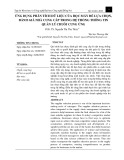
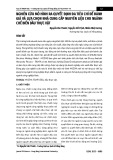

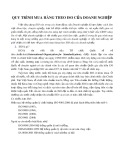
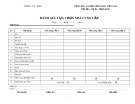
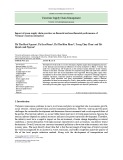
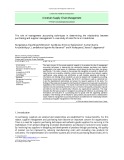
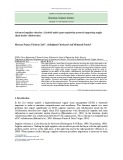
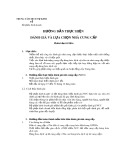

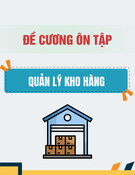
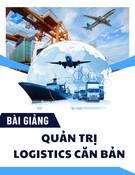
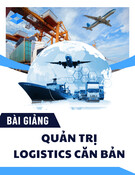
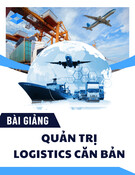
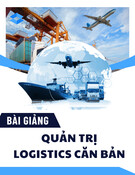
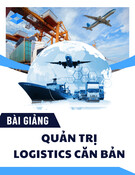

![Đề kiểm tra Quản trị logistics [mới nhất]](https://cdn.tailieu.vn/images/document/thumbnail/2025/20251015/2221002303@sv.ufm.edu.vn/135x160/35151760580355.jpg)
![Bộ câu hỏi thi vấn đáp Quản trị Logistics [năm hiện tại]](https://cdn.tailieu.vn/images/document/thumbnail/2025/20251014/baopn2005@gmail.com/135x160/40361760495274.jpg)
